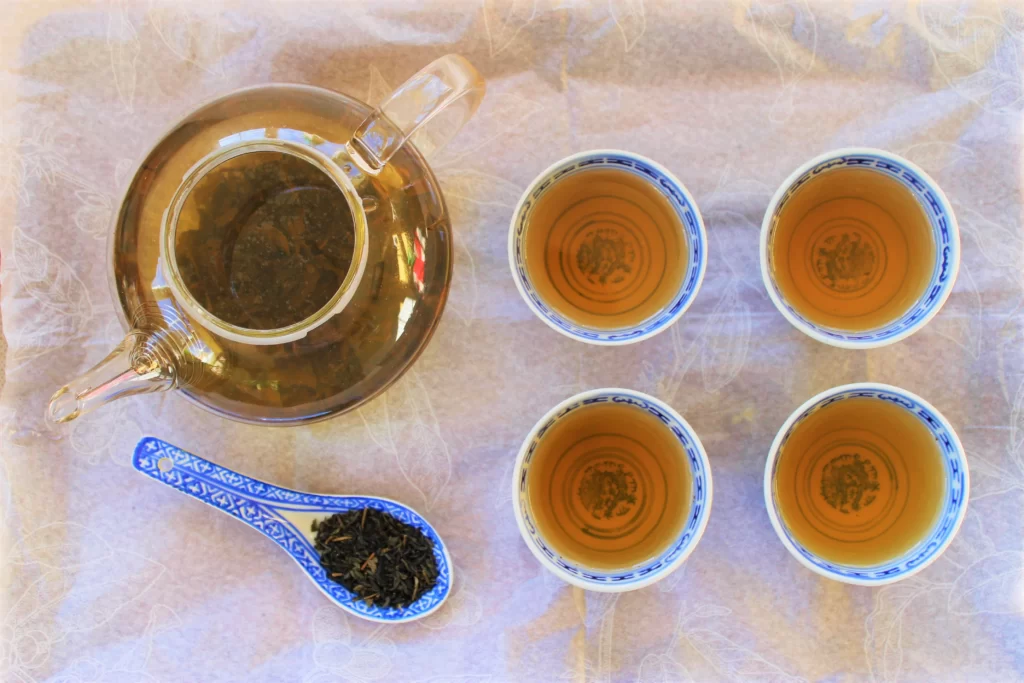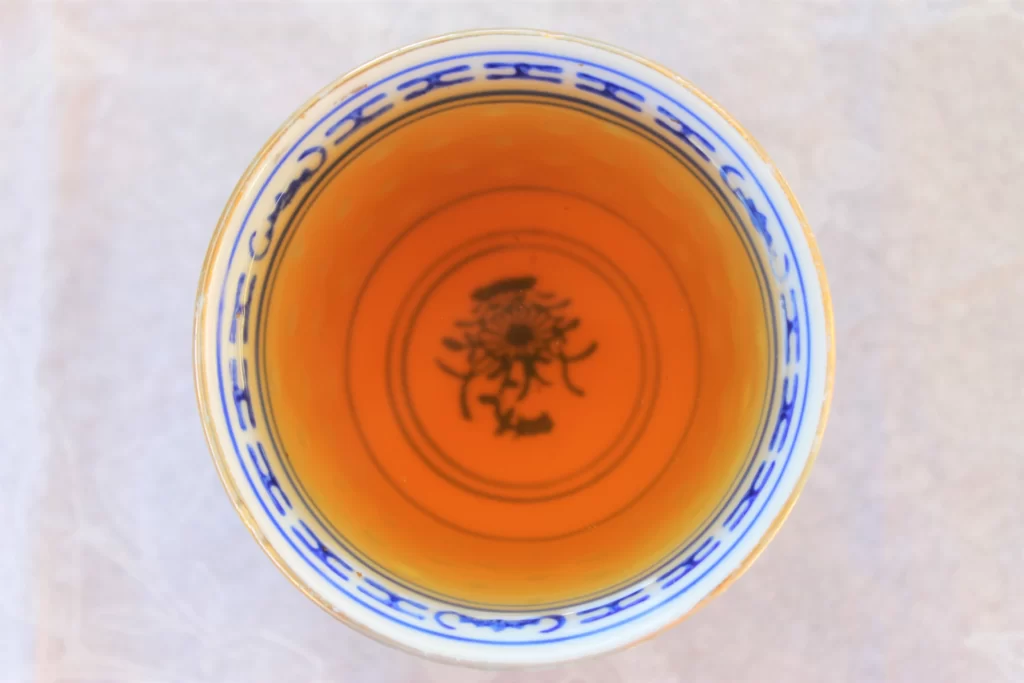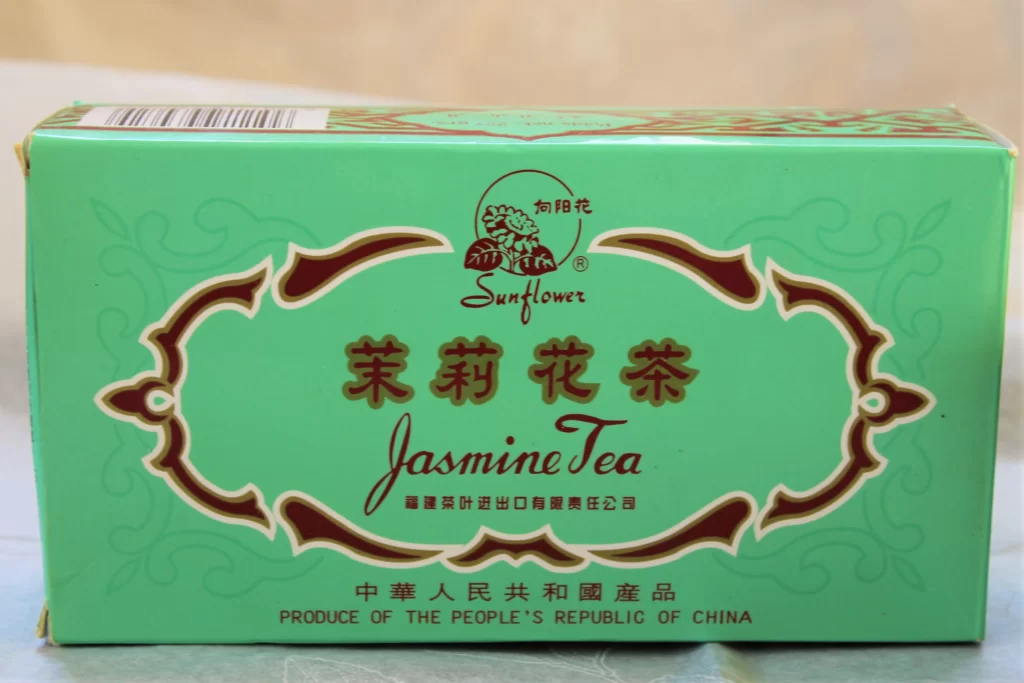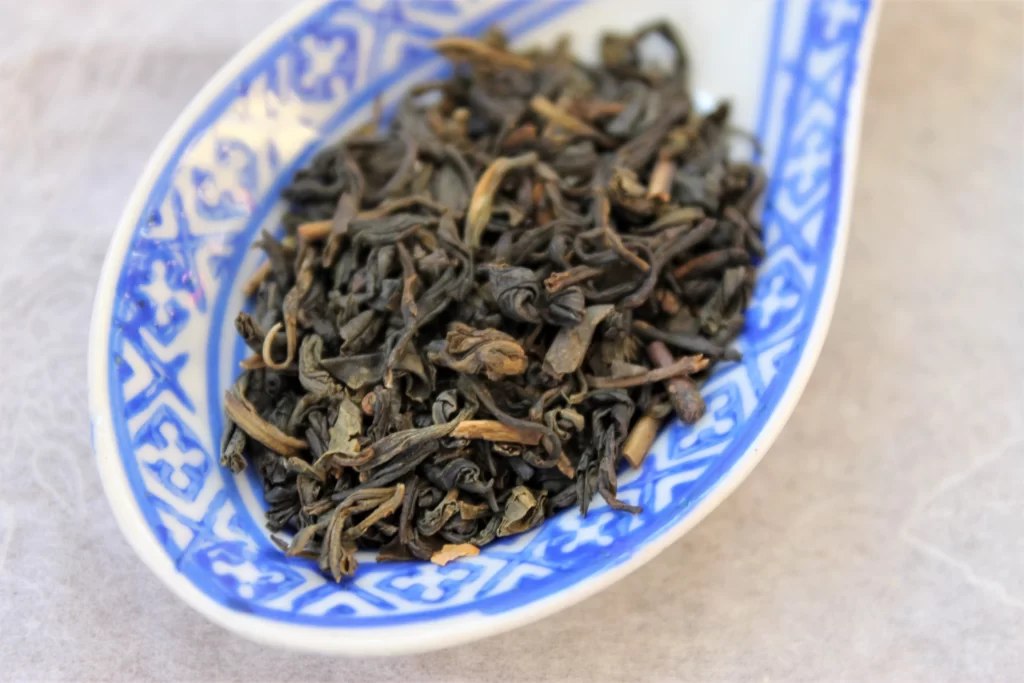
Sunflower Jasmine Tea Review

All this sunny February weather and reminiscing over Jon’s latest Venice travel article about our time in Italy, and I’m starting to really get in the mood for light, floral, fragrant green teas. My go-to teas for the hot summer months.
So, this week I’m heading back to an old favourite; Sunflower Jasmine Tea.
My earliest memory of this tea is travelling into London for the first time with my parents when I was just a child. We stopped off at Chinatown to pick up a box of Sunflower brand Jasmine tea (where we still buy it today), replace some of the delicate blue cups we’re always breaking (pictured), and enjoy a meal before heading home. It’s one of my happiest memories!

If you’ve never had jasmine tea before or you’re just looking for a new Jasmine tea blend to try, this Sunflower Jasmine Tea Review is exactly what you need.
Sunflower Brand Jasmine Tea at a Glance
- Blend: Green tea with jasmine petals
- Flavour: Cleansing green tea with floral jasmine and a bitter dryness
Best drank with food, this Jasmine tea is a true palate cleanser.
There are 2 different packaging options from Sunflower, there’s the golden orange tin (click the image to the side to be directed to Amazon UK or US to buy it, depending on your location) and there’s the classic green box I bought from Chinatown.
If you’re in the UK and you want the green box instead of the tin, check it out on Amazon UK here.
Full Review - Sunflower Chinese Jasmine Tea

- Type: Loose leaf
- Tea: Chinese green tea
- Additives: Jasmine
- Flavour Notes: Bitter, cleansing jasmine with a surprisingly warm body
- Aroma: Woodsy with subtle jasmine
- Milk or Lemon: Neither
- Where to Buy: Chinatown or Amazon
Inside the iconic green tea box there’s a foil package containing the tea. Opening it was a delight. The dry leaves have a woody aroma with a hint of smoke – I imagine this is from the Chinese method of fixing the green tea leaves over a fire. It’s very aromatic and enticing.
While I love the grassy notes you get from steaming green leaves, there’s just something more homely about that smoky note. The jasmine scent is subtle but still there – I can see some jasmine petals amongst the leaves.

Once brewed, the aroma loses that smoky note and you get more of a jasmine floral scent emerging. The jasmine tea liqueur is a warm golden colour that gets noticeably darker as the minutes pass until it’s verging on amber.
This was quite interesting. It almost behaves like a black tea, oxidised for a rich body rather than a clean one. In fact, the flavour is surprisingly dark too.
Yes, it has that light cleansing feel from the jasmine petals, but it doesn’t have many of the light, vegetative notes that many green teas have. There’s a dryness to this Chinese Jasmine tea and hint of bitterness in the aftertaste.
Personally, this tea makes me feel very nostalgic. One sip and it takes me back through years of Chinese meals with my family.
How to Brew Jasmine Loose Leaf Tea

I brewed this tea the best way I know how and the way I watched my parents brew it for years.
1 heaped teaspoon in the teapot, pour over 80°C water, and wait. The box instructions suggest waiting about 5 minutes, but the tea was at a light drinkable infusion by about 3 minutes for me. I tested the tea at several intervals:
3 minutes – light, golden, dry but not bitter. The jasmine is strongest at this point.
5 minutes – still light and unmistakeably a green tea but with more of a body. I noted some bitter notes sneaking in amongst the jasmine.
9 minutes – at this point, all the leaves have fully bloomed letting me know it’s completely infused. The tea has a rich amber colour and a noticeable body. The jasmine is very subtle (more aroma than flavour) and there’s a very dry bitterness to the tea.
The reason I brewed it all the way up to 9 minutes is because often the tea leaves are sitting for that long while we enjoy our dinner. After that last mouthful of delicious, sticky sweet pork, that strong brew of Jasmine tea doesn’t taste bitter at all. The dryness of the tea has a remarkable cleansing effect on the palate that makes it perfect for drinking with food.
If you’re not drinking this tea with food, I’d recommend an Eastern style tea ceremony (more on what and why below) or stopping your western style brew after 3-5 minutes depending on taste.

Why Sunflower Jasmine Tea?
Sunflower Jasmine Tea brand is brought to us by Fujian Tea Import & Export Co. While it does taste delicious, I do have some problems with this tea. It just doesn’t feel authentic. Here’s my reasoning:
- The tea includes jasmine flowers, which will only contribute to the bitterness. A quality jasmine tea will be infused with the petals but then carefully separated from them before packaging.
- The instructions are for a western style brew method. I’m going to write an article about the difference in methods soon, but for now, this is what you need to know. Western brewing involves a small amount of tea (usually 2g per cup) left to brew for several minutes. Eastern style (Gongfu) uses a large amount of tea that’s brewed for just a few seconds (usually 10 seconds or so) but then repeated multiple times for multiple servings. Considering the box design and the fact I buy it directly from Chinatown, I was expecting genuine Gongfu brewing instructions.
- The tea leaves are mixed. Take a look at my picture to see what I mean. There is a perfectly formed tea leaf with no sign of bruising or cutting… but there are also a noticeable number of stalks and broken leaves. I find this odd. Were all the tea leaves supposed to be broken, or whole? In my experience, teas will either be one or the other. This is the first time I’ve come across both in one pack. Perhaps this size difference is causing the bitterness by over-infusing the smaller leaves while the whole leaves take time to unfurl.

A sample of the tea leaves after infusion.
Summary
I would definitely recommend having a box of this tea stashed away in your cupboard, it’s so affordable! The flavour is delicious and brewing this tea quickly becomes a family ritual whenever you splash out on a Chinese takeaway.
About Me
Venice, Chinatown, even Ukraine. I get around a bit and I pick up some interesting teas along the way! But don’t mistake me for a tea snob. If it’s high quality and tastes good, I’m happy! Check out all my other tea reviews and travel adventures on the Immortal Wordsmith blog.
A Tea Book for Beginners
If you’re feeling a bit lost, don’t despair. The world of tea, although deep, is very inviting! Check out my book, The English Tea Book for more basic information to get you started on your tea adventure. Subscribe to Immortal Wordsmith for a notification when it goes live!